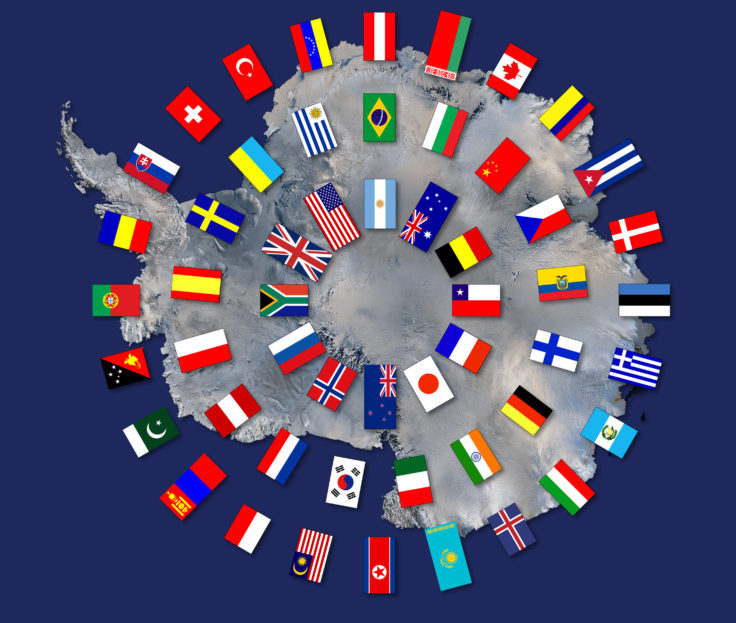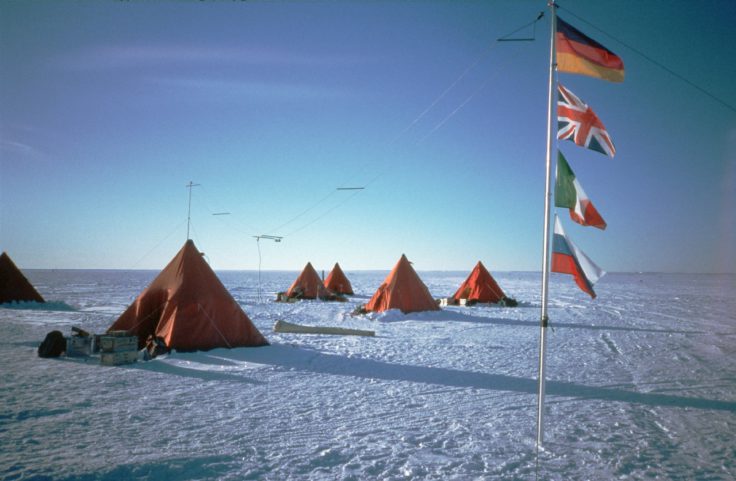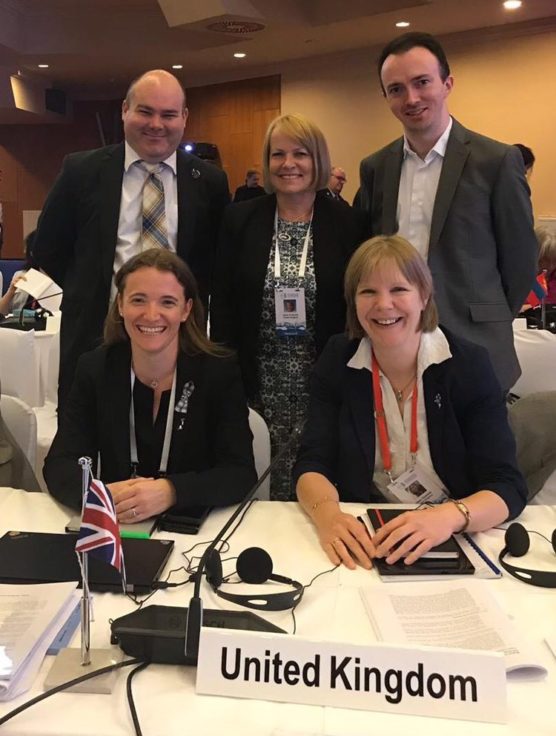Diamond Jubilee: The 1959 Antarctic Treaty
23 June, 2021
Klaus Dodds is Professor of Geopolitics at Royal Holloway University of London and Fellow of the Academy of Social Sciences. He is an Honorary Fellow of British Antarctic Survey and a trustee of the Royal Geographical Society. Here he blogs in a personal capacity, reflecting on the 60th anniversary of the Antarctic Treaty.
Today, 23 June, marks the 60th anniversary of the entry into force of the Antarctic Treaty. A treaty that was negotiated between October and December 1959 and which then, after signing on 1 December of that year, took another 18 months to secure the necessary ratification via national parliaments of the original signatories. The UK was the first to ratify the Treaty and for good reason. The provisions of the treaty meshed well with the national priorities of a country eager to achieve cost savings alongside broader strategic realignment in the wake of the disastrous 1956 Suez Crisis and dismantling of the British Empire east of Suez. The political story of Antarctica is one that is informed by and infused with post-imperial and Cold War geopolitics.

Hosted by the United States, the twelve parties that gathered for the Washington Conference on the future of Antarctica were well known to one another. Prior to the conference opening in October 1959, multiple preparatory meetings had been organised to address a simple question: how was Antarctica to be managed after the International Geophysical Year (1957-8)? During the IGY, the same twelve countries including the superpowers (the US and USSR), UK, Argentina, Australia, Belgium, Chile, France, Japan, New Zealand, Norway, and South Africa organised their polar programmes around the continent. Some of the participants were claimant states including the UK, some expressed interest in a potential future claims (such as the US and USSR) and some did not articulate a public position on a possible claim. Either way, the ownership of the Antarctic was unsettled and the IGY’s Antarctic programme worked because all parties agreed that international scientific activity could not be constrained by territorial restrictions. So, if the USSR wished to operate its scientific programme in Australian Antarctic Territory for the duration of the IGY then it had to be allowed to do so.
In 1958, the Scientific Committee on Antarctic Research (SCAR) was established to facilitate international collaborations in Antarctic science and this body helped to consolidate a view of the polar region as a ‘natural laboratory for science’. This framing mattered. There were alternative possibilities. During the Cold War, there were fears that the polar continent could be a site of superpower rivalries. Speculation was rife that the US and USSR might be tempted to carry out nuclear tests or that IGY era research stations could house secret military bases where missiles might be stationed. In Australia, it was common to read febrile reports of secret Soviet military plans to threaten the southern cities of the country. Antarctica, however remote and lacking in indigenous population, might in the worst-case scenario become yet another point of discord. All the parties were eager to avoid that proposition but beyond that they all had their own interests and wishes.

How do we know that? If you take a visit to the archives of the British Antarctic Survey (BAS) and Scott Polar Research Institute (SPRI) in Cambridge you can discover via various diplomatic and scientific papers and memoranda what was being thought about, discussed, and negotiated in the late 1950s. My favourite source is the diaries complied by the Foreign Office’s polar adviser, Dr Brian Roberts. Held in the SPRI archives, Dr Roberts was there at the Washington Conference. In his typed diaries, he records in detail how the parties used formal meetings, informal gatherings and corridor talk to thrash out an Antarctic Treaty. Roberts describes the sleepless nights he had worrying about how to protect the UK’s interests while securing consensus for a treaty. There was no formal talk of resources in 1959 because the ownership of Antarctica was and is disputed. Managing territorial claims was even harder because the UK’s claim overlapped with that of Argentina and Chile. And even securing the demilitarization of Antarctica was highly sensitive because it depended on parties agreeing trust mechanisms for ensuring that this was respected.
What emerged after six weeks of intense negotiation was a testimony to diplomatic negotiation. The Antarctic Treaty used science as a pathway to cooperation and confidence building. Governance was organised around consensus. All the parties agreed to put the ownership dispute to one side for the sake of collaboration and generation of goodwill. Military activity and nuclear testing were banned. The right to inspect one another’s bases was enshrined and future membership was open but determined by commitment to ‘substantial scientific activity’. What the treaty reflected therefore was its limited membership base. There was no India, China, Brazil at the conference. There was no role for non-governmental organization and media scrutiny was modest. The rules of Antarctic governance were composed and introduced by a group of highly experienced polar operatives and the superpowers achieved what they wanted; free access to all of Antarctica, limited membership, and demilitarization. Both the Soviet Union and the US were substantial scientific powers. In 2021, there are now 54 signatories to the Treaty and China is a polar power and others such as Turkey have aspirations to be a polar leader.

The Treaty protects the status quo of British Antarctic Territory. The 1960s reflected a step change in the professionalisation of polar science and a recognition that BAS’s institutional existence (1962 onwards) needed to move away from earlier rounds of mapping and surveying. UK polar science diversified as the business of the Antarctic Treaty parties expanded from continental-based science to living resource management and later climate change. Polar science remains instrumental in Antarctic governance. One area of continuity was unquestionably participation with few roles for women and under-represented communities until the 1990s onwards. Much has changed since the late 1950s. And more is being done via the Diversity in UK Polar Science Initiative.
The 60th anniversary of the Treaty is a moment for reflection. No one was speaking in 1961 of climate change, marine protected areas, sea level rise, alien species invasion, and ice sheet instability. Antarctica is now recognised as not remote but integral to planet Earth. With new investment in the research vessel RRS Sir David Attenborough and station modernization in BAT, the UK is well placed to contribute to urgent scientific questions affecting the continent and Southern Ocean.